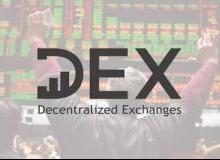On-chain leveraged tokens are favored, with Opium, Charm, and Index Coop recently launching related products
This article is an original piece by Chain Catcher, author: Echo, editor: Gong Quanyu.
Since last year, leveraged tokens have become star products on major exchanges. Following the launch of this product by FTX, exchanges such as Binance, Huobi, MXC, and Gate.io have all launched their own leveraged tokens, making it an important part of the strategic development for multiple exchanges.
According to a previous report by Chain Catcher, leveraged tokens are products that track the price fluctuations of target assets at a specific multiple, allowing investors to use fixed leverage to invest in specific cryptocurrencies without margin. Under the general mechanism, if one is bullish on BTC, they would purchase a three-times leveraged BTC token. In this case, if the price of BTC rises by 1%, the token rises by 3%; conversely, if the price of BTC falls by 1%, the token falls by 3%. Its characteristics of "low cost, high return" and the absence of liquidation risks have quickly attracted a large number of investors.
Leveraged tokens have proven to be valuable and have an audience in cryptocurrency trading, but they have remained rare in the DeFi space for a long time. Recently, Opium, Charm, and Index Coop have launched their on-chain leveraged token products based on the AMM mechanism, and the FinNexus team has also announced plans to launch decentralized leveraged tokens in the second quarter of this year, with their leveraged token framework already disclosed. The centralized leveraged tokens initially launched by FTX are undergoing a decentralized iteration, gradually moving on-chain.
1. Charm
Charm is a decentralized options protocol based on Ethereum, designed to provide users with European call and put options, and uses a prediction market AMM to create liquidity. In March of this year, Charm completed a seed round of financing led by Divergence Ventures, DeFiance Capital, and Delphi Ventures. In April, the project launched the decentralized leveraged token Cube Token, with a leverage ratio of 3 times, currently supporting BTC, ETH, AAVE, LINK, UNI, and YFI, with a cumulative trading volume reaching millions of dollars.
According to Chain Catcher research, the main features of Charm's leveraged token product are:
The Cube token is ETH-based, meaning users can only trade using ETH. Even if the underlying asset rises, if the price of ETH falls too much, the leveraged token may still incur losses.
The upside potential of the token is limited by the remaining available funds in the liquidity pool. If a certain cube token has a high share of the liquidity pool, the potential downside may exceed the upside; for example, if BTC rises by 1%, but the remaining part of the pool rises more than 1%, Cube BTC may still fall, at which point selling the token should be considered.
The leverage level of the Cube token will not be strictly anchored at 3 times. If many users purchase the same Cube token, it will be diluted, and the leverage ratio will decrease, potentially falling below one or even becoming negative.
The Cube token employs a continuous rebalancing mechanism to adjust the leverage ratio constantly. This mechanism distinguishes Cube from other leveraged tokens that have fixed or irregular rebalancing.
"Zero-sum game." The counterpart of exchange leveraged tokens is often the exchange itself rather than both long and short sides, but the "zero-sum game" characteristic of Cube eliminates counterparty risk and is not affected by the erosion of net asset value due to the passage of time.
The Cube token has no liquidation risk, with 80% of the deposit and withdrawal fees returned to Cube token holders, while the remaining 20% is used for protocol development.
However, currently, the Cube product code has not been audited, and there may be risks of smart contract vulnerabilities; the official team reminds users to be aware of these risks.
2. Opium
Opium is a decentralized derivatives protocol that allows anyone to build customizable tradable derivatives on Ethereum and has created its own token standard. In November last year, Opium completed a $3.25 million financing round with investments from HashKey, Galaxy Digital, Aave founder Stani Kulechov, Synthetix founder Jordan Momtazi, and others.
Recently, it launched its leveraged token products on Polygon and BSC, including Opium Turbo ETH and Opium Turbo AAVE. According to Chain Catcher research, Opium's leveraged token product Turbo differs significantly from other leveraged tokens currently on the market, as Turbo introduces options into leveraged tokens, with the following main features:
- The Turbo ETH product only incurs losses from the "Turbo" itself, not from the Ethereum it tracks. The Turbo token is equivalent to the premium of an option, with a leverage ratio of 10 to 30 times above the strike price.
For example, if the current trading price of ETH is $2400, the price of Turbo is $66, and the strike price is $2500, if ETH closes at $2600, Turbo will be destroyed, resulting in a profit of $100. The greater the difference between the closing price and the strike price, the higher the profit. However, if ETH's closing price is below the strike price, Turbo will be destroyed, and there will be no profit.
It is important to note that, unlike exchange leveraged tokens that "cannot be liquidated," Turbo itself may be destroyed, but the maximum loss is only the Turbo.
- An ETH equity pool is set up to purchase the anchor assets for Turbo. Users deposit ETH into the pool to pay for the mining costs of Turbos and receive fees (the cost of Turbo) from Turbo buyers as a return. ETH can appreciate up to 3% daily, with additional returns, while profits exceeding 3% belong to Turbo buyers.
3. Index Coop
Index Coop is a decentralized index community initiated by Set Protocol, where community members can propose projects for index products. Recently, it collaborated with DeFi Pulse to launch the on-chain Flexible Leverage Index (FLI), aimed at reducing the risks and costs associated with maintaining collateralized debt. According to Chain Catcher research, FLI has two main features:
FLI aims to absorb major volatility peaks and rebalance flexibly to ensure that collateral levels remain above the liquidation threshold. FLI also utilizes an emergency deleveraging mechanism to provide users with additional security in the event of a black swan event.
FLI is a fully collateralized leveraged token, which can provide better risk conditions compared to synthetic leverage.
FLI utilizes algorithms to improve rebalancing efficiency by an order of magnitude, thereby reducing users' gas fee burden. Additionally, the 1.95% annual management fee is cheaper than alternatives from centralized exchanges.
Overall, on-chain leveraged tokens have several characteristics compared to exchange leveraged tokens:
On-chain leveraged tokens are cross-border and permissionless. Anyone can participate without the need for KYC certification.
Smart contracts are open-source, ensuring higher transparency compared to centralized exchanges.
All on-chain leveraged tokens use the AMM mechanism, eliminating counterparty risk during trading.
Transaction costs are low. Although on-chain transaction fees are higher than those of exchanges, exchanges often indirectly charge higher management fees, while DeFi leveraged token products have lower management fees.
Currently, exchange leveraged tokens have developed relatively maturely, capturing most of the target users in the market. As more DeFi projects enter the space, how on-chain leveraged token products can carve out a larger scope in a limited market and attract more users is worth keeping an eye on.











